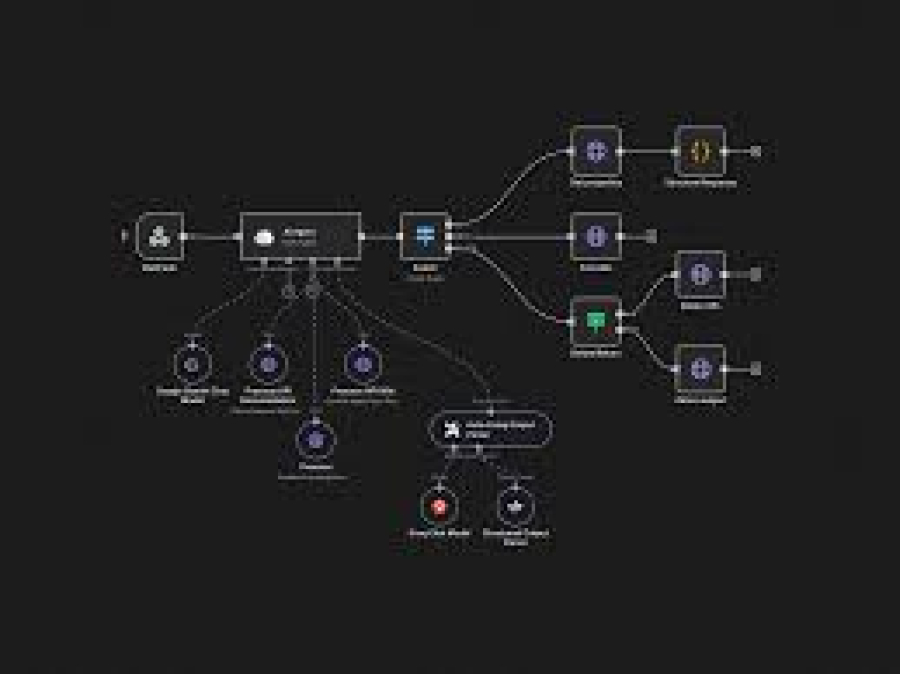How to Invoice Like a Pro as a Freelance Accountant
Invoicing may seem like a simple task, but for freelance accountants, it’s a vital part of building trust, getting paid on time, and maintaining professionalism. A well-structured invoice doesn't just request payment—it reflects your brand, your work ethic, and your communication style.
At freelancerbridge, we help creative and financial professionals alike to structure their freelance business effectively. In this guide, we break down how you, as a freelance accountant, can invoice like a pro—with clarity, accuracy, and efficiency—so that you never chase payments again.
Long Description: How to Invoice Like a Pro as a Freelance Accountant
Whether you’re working with startups, solopreneurs, or large businesses, your invoicing process sets the tone for how seriously clients take you. The more professional and precise your invoices are, the more likely you are to be paid promptly—and to be rehired again.
This comprehensive guide covers:
Why professional invoicing matters
Essential components of a solid invoice
Best tools and software for accounting freelancers
Invoicing tips to avoid late payments
Handling international clients and tax compliance
Legal aspects and policies to include
Common mistakes to avoid
Let’s help you turn your invoices into a tool of confidence and consistent income.
1. Why Professional Invoicing Matters for Freelance Accountants
As a financial professional, clients expect you to be organized, timely, and accurate. An amateur or unclear invoice can raise doubts—even if your work was top-notch.
Benefits of professional invoicing:
Ensures clear communication of services rendered
Builds trust and credibility
Reduces payment delays and disputes
Helps with financial tracking and reporting
Creates a positive and branded client experience
When your invoices are clean, timely, and aligned with your contracts, you’ll never have to worry about unpaid work.
2. Key Components of a Professional Invoice
Every invoice you send should include these key elements to be both compliant and client-friendly:
Essential invoice elements:
Your Name or Business Name
Your Address and Contact Details
Client’s Name and Contact Info
Unique Invoice Number
Invoice Date & Due Date
Breakdown of Services Provided
Hourly Rate or Fixed Fee
Total Amount Due
Currency and Tax (GST/VAT if applicable)
Payment Terms (Net 7, Net 30, etc.)
Accepted Payment Methods (bank, UPI, PayPal, etc.)
Late Payment Policy (optional but recommended)
Thank You Note or Personal Message
Adding your logo or brand colors is a bonus for brand consistency.
3. Use Invoice Software for Accuracy and Speed
Manual invoices (in Excel or Word) can work, but using invoice software saves time and reduces errors.
Top tools for freelance accountants:
Zoho Invoice – Free, GST-compliant, highly customizable
QuickBooks – Great for freelancers who also do accounting
FreshBooks – Simple UI, recurring invoices, and time tracking
Wave – Free and intuitive, perfect for new freelancers
Bonsai – Contracts + invoicing, built for freelancers
PayPal Business – Easy for international clients
Most of these tools allow automated invoicing, templates, and payment tracking—all of which elevate your professional image.
4. Define and Communicate Your Payment Terms
To avoid late payments, it’s essential to set clear terms upfront—both in your proposal and invoice.
Tips:
Mention due dates clearly: e.g., “Due within 15 days” or “Net 30”
Include late fee clauses: e.g., “A 5% late fee applies after 30 days”
Be transparent about discounts (if any): e.g., “Early payment discount of 5% within 5 days”
Use polite but firm language: “Please make the payment by the due date to avoid late fees.”
Including these terms in both your contract and invoice helps eliminate ambiguity.
5. Add Detailed Descriptions for Transparency
Vague terms like "accounting work" are less effective than descriptive lines.
Use clear line items like:
“Monthly bookkeeping for May 2025”
“GST return filing – Q1 FY25”
“One-hour Zoom consultation on tax planning”
“Preparation of TDS documents and filing”
Specificity shows professionalism, helps clients understand value, and makes it easier for them to approve and process payments.
6. Offer Multiple Payment Methods
Make it easy for clients to pay you. Offering 2–3 payment options increases your chance of receiving timely payments.
Common payment methods:
Bank Transfer (NEFT/RTGS/IMPS)
UPI (India-based freelancers)
PayPal (for international clients)
Wise (for receiving cross-border payments with low fees)
Stripe (for credit card payments)
Include clear instructions and account numbers or links in every invoice.
7. Handling International Clients and Tax Compliance
If you're working with overseas clients, consider the following:
Key points:
Mention the currency (e.g., USD, EUR, INR) in your invoice
Include a note on currency conversion rates, if relevant
Clarify tax exemption status for international clients
Use platforms like Wise or Payoneer to avoid high bank fees
If you’re GST-registered in India, include export invoice format (with "Supply meant for export on payment of IGST")
Consult a CA or tax expert to stay updated on cross-border tax laws.
8. Automate Invoicing for Retainer Clients
If you have monthly or retainer-based clients, use automation to save time.
Tools to automate:
FreshBooks or QuickBooks: Set recurring invoices
Zoho Invoice: Set reminders and auto-send features
Bonsai: Integrates contracts, tasks, and recurring billing
Invoice Ninja: Free open-source invoicing with automation features
This ensures you never forget to send an invoice and improves consistency.
9. Maintain a Consistent Invoicing Schedule
Set a regular schedule for invoicing to train clients to pay on time.
Recommended practices:
Invoice immediately after completing work
For monthly clients, invoice on the 1st or last day of the month
Use reminders (email or software notifications) for follow-ups
Create a “Sent,” “Paid,” and “Overdue” folder system
Consistency breeds reliability and financial stability.
10. Legal Clauses and Client Policies to Include
To protect your interests, you may include:
Refund Policy – “No refunds after delivery of services unless agreed in writing.”
Payment Failure Clause – “Failure to pay within 30 days may lead to work suspension.”
Dispute Resolution – Mention if disputes will be handled via email, arbitration, etc.
Late Fees and Charges – Be clear and fair.
Having these terms on the invoice and contract reduces misunderstandings.
11. Common Invoicing Mistakes to Avoid
Avoid these errors that can delay payments or hurt your image:
Missing client contact info or invoice number
Typos in amounts or due dates
No tax information (especially if GST-registered)
Not following up on overdue invoices
Forgetting to attach the invoice in the email
Always double-check before sending any invoice.
12. Sample Invoice Layout for Freelance Accountants
Here’s a basic structure you can use:
yaml
Copy
Edit
INVOICE
From: [Your Name / Business Name]
[Your Address | Email | Phone]
To: [Client Name | Company]
[Client Email | Address]
Invoice #: 2025-001
Date Issued: June 21, 2025
Due Date: July 5, 2025
Description | Hours/Qty | Rate | Amount
---------------------------------------------------------------
Monthly Bookkeeping – June 2025 | 1 | ₹5000 | ₹5000
GST Filing & Returns – Q1 FY25 | 1 | ₹3500 | ₹3500
---------------------------------------------------------------
Total Amount Due ₹8500
Payment Instructions:
Bank: ABC Bank
Account Number: 123456789
IFSC: ABCD0001234
UPI ID: yourname@upi
PayPal: yourname@example.com
Terms:
Payment due within 14 days. Late payment will incur a 5% fee.
Thank you for your business!
Conclusion
Invoicing is more than just a billing step—it’s a reflection of your brand, workflow, and professionalism. By creating clear, accurate, and branded invoices, you not only get paid faster but also gain client trust and repeat business.
As a freelance accountant, your invoices should show that you walk the talk when it comes to financial precision. Use the tools, templates, and strategies shared above to invoice like a pro—and grow like a pro.
At freelancerbridge, we’re committed to helping freelancers manage the business side of creativity and finance. Start implementing these tips today and turn your invoices into a seamless part of your growth journey.


 by Emily
by Emily




